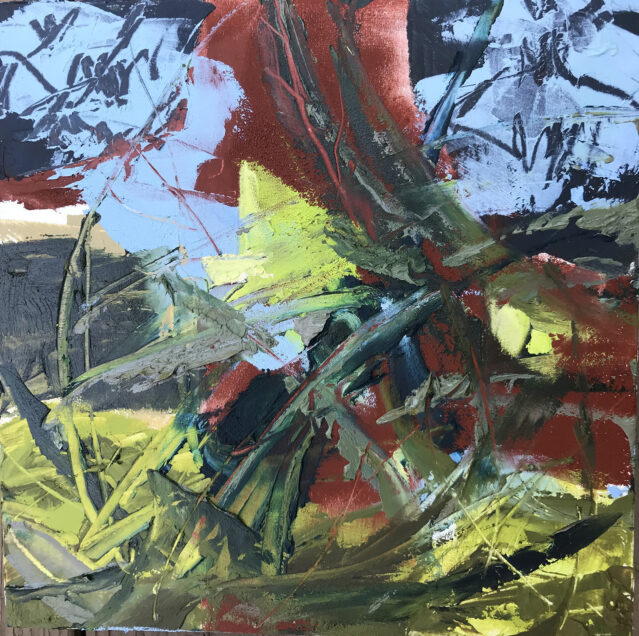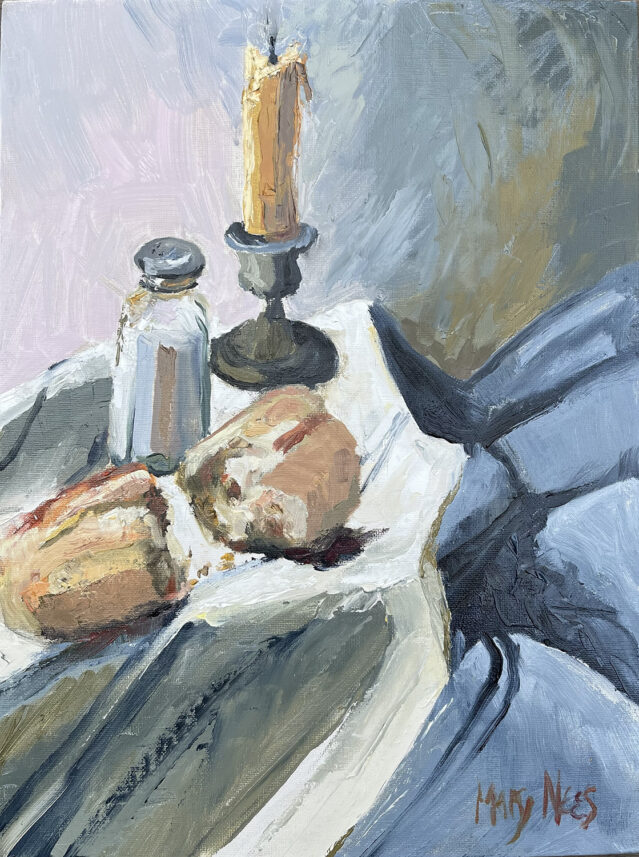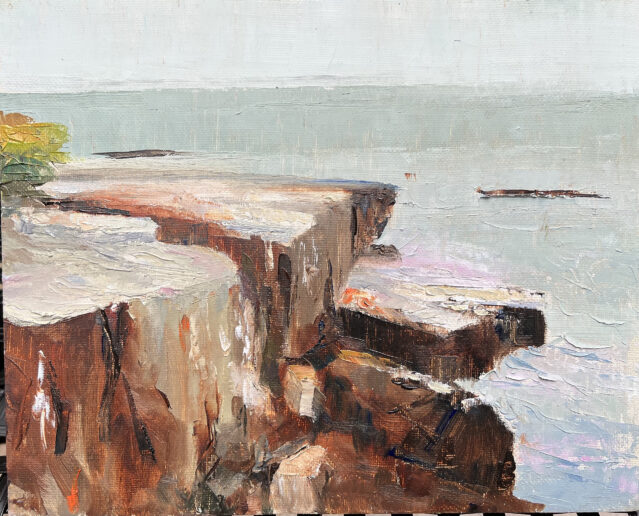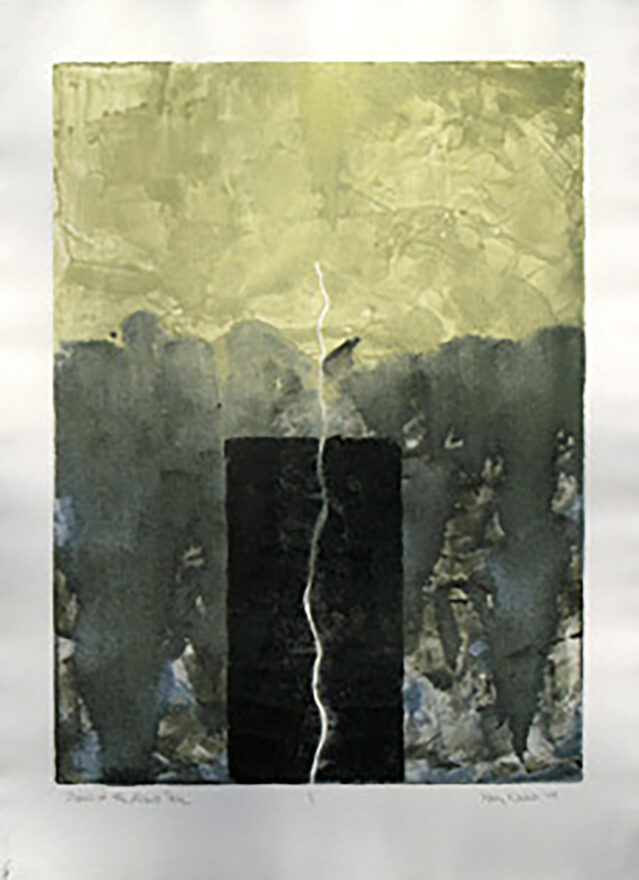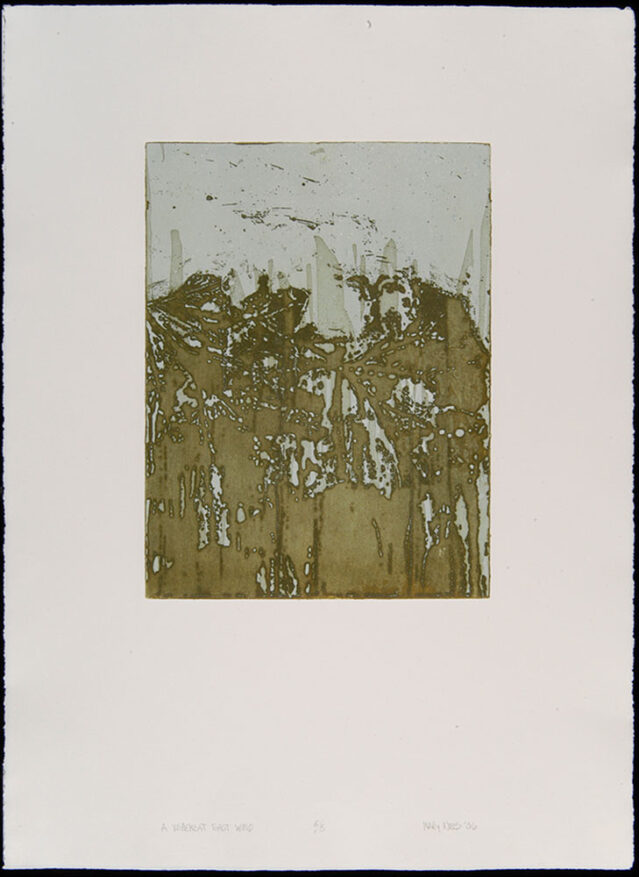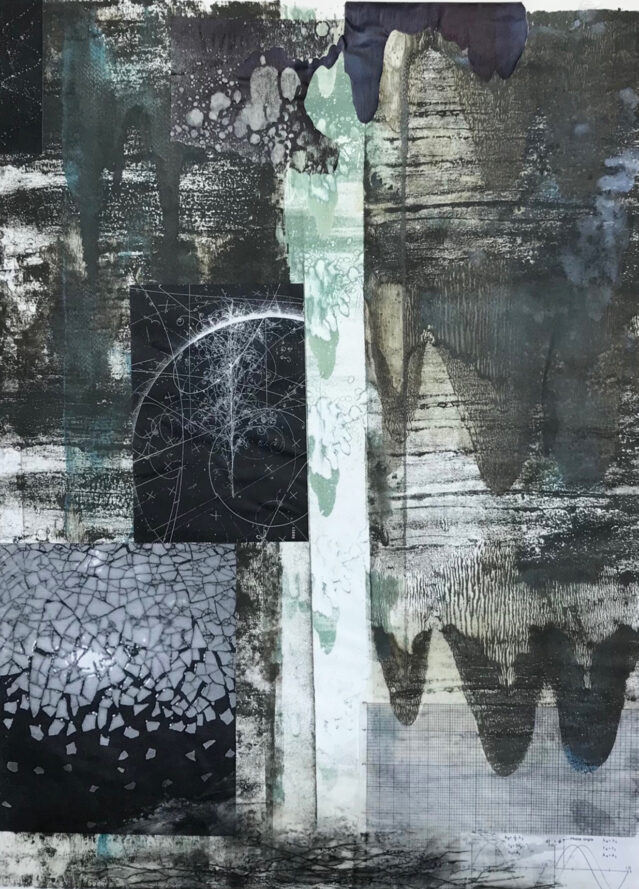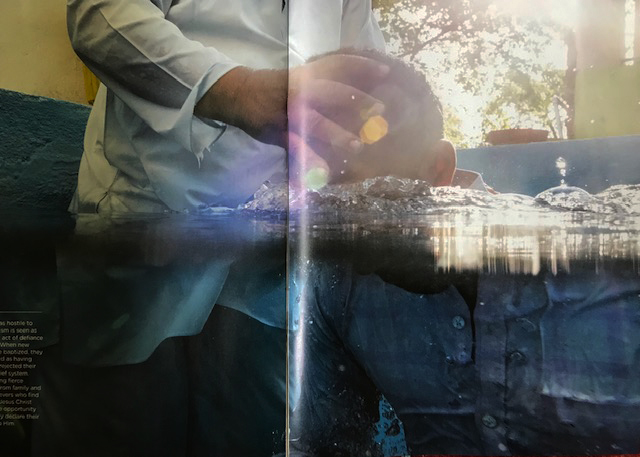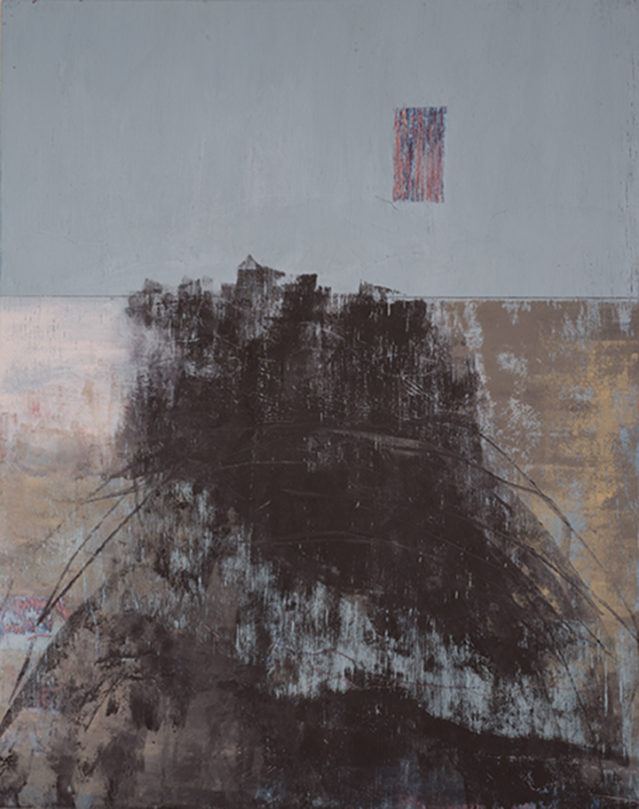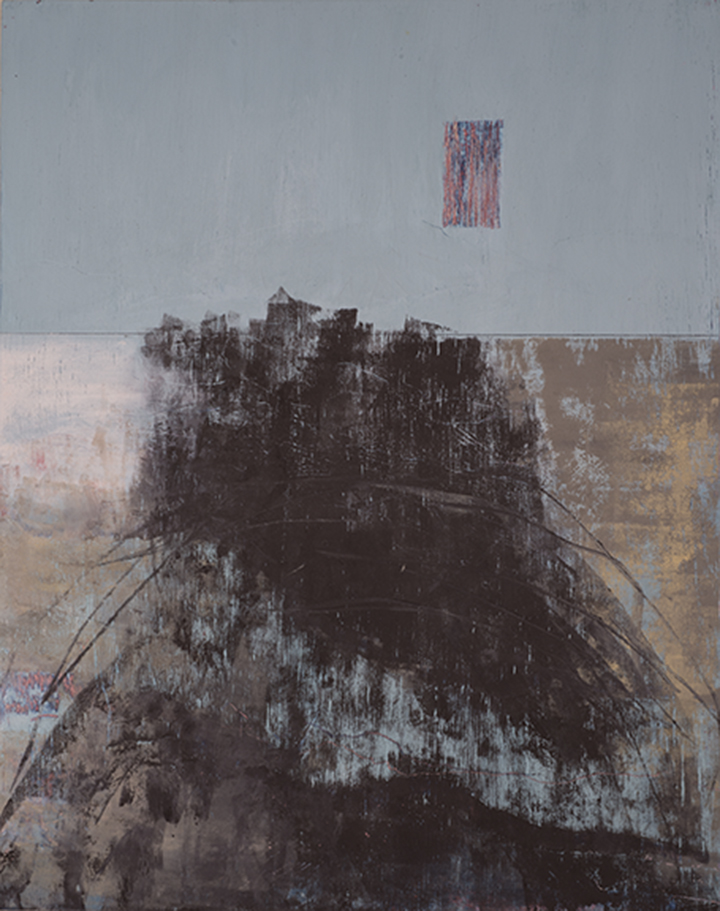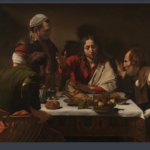Recently I emailed a friend about something on which I needed a follow up. We’d both gotten kind of rusty on the task at hand and she said in reply “it’s been a minute”. I laughed understanding her for it had been several months — not minutes. But we use this phrase and everybody gets it, for it feels like time is speeding up. Months are minutes, and minutes sometimes are packed with consequence. The word “moment” is another current word used. I see it in artist’s statements sometimes, it sounds trendy and alert to say “in this moment” as if what we’re sensing will soon rev right on by. Eras and epochs are out, they are no longer spoken of. Moments and minutes are in. Is your head spinning?
The piece I’m showing therefore is one which speaks to this idea of time’s slow-to-fast accelerations. Holding layers and a quick emergence of moment, there’s a lot hidden in the symbolism. This is a very small oil impression from a trip I took to Israel. In Caesarea by the sea we walked thru the impressive physical remains of a large Roman port. After the Romans disappeared, the Crusaders built their own stone structures. Their era is long gone as well. Alongside one of the paths under that Mediterranean sun was a small fig tree. It had fruit on it soon to emerge for the picking. It was alive. One part of a leaf caught the light and enchanted me midst the bramble of greens and browns. The stone path is suggested just slightly on the left. The energy of the moment was felt in the chaos of all that has been laid down and fought over on that very ground, including the choice of red behind the blooming bits. But my focus was on what is emerging. That’s what captivated me and still does. There is history here but there is also so much significant promise yet to be seen. It’s coming. It’s weighty. And it feels to me that we are in an escalating moment toward what the Hebrew prophets spoke so repeatedly of.
The fig tree was important in ancient Israel, not only for sweet sustenance, but also as a sign for when the nation itself would flourish or instead be in regression. There are two yearly harvests of figs with the later harvest being much richer. There is promise even in that reality. But in times of terror, the fruit withers and dies in the trauma. That has happened repeatedly in the past and it will happen again more consequentially in the future. But that future is not the promised end.
I had a rich conversation with one of my grandsons this past week. He’s on a campus where there is all the same clamor you’re hearing about. He was thoughtful about it, so I spoke of what the building take-overs were like when I was a student. How I was involved and what emerged as a result. There were boisterous chants then too, same rhythm different words. How robotic? Are we just in some kind of cyclical reiteration or are we heading somewhere? A French Philosopher observing human cycles said “the more things change the more they stay the same”. That’s similar to what Solomon said 3000 epoch’s earlier: ‘there’s nothing new under the sun’ it’s all been seen before. There is some comfort in the wisdom there. But after my conversation with my grand I thought about the revving speed of the cycles. In 1969 no one was shouting death to the nation they were standing in from our campus; and no one was taking down the national flag and replacing it with something else. We’re witnessing immolation, litterally and figuratively. We are in a different moment now. In our time the protests were about ending a war or adding a certain studies programs to the curriculum. In this present iteration there is a more consequential binary being shouted: choosing life or choosing death.
What makes the news headlines however, is missing the real story (and that was true then too). For many are quietly observing, grappling with the import, and thinking for themselves. Others will just follow the crowd, for wide is that way and easier for them (in the moment).
But where I return my heart (often) is that the Grand Maker of light and figs and tastebuds supervises times and histories. He still allows the glimpse of sunlight on a leaf and the emergence of life for the hungry. He comforted the weary, saying with otherworldly authority “blessed are those who hunger and thirst for righteousness, for they will be satisfied.” And when a soul can grasp the depth of that: His promise — it only takes a nanosecond.
